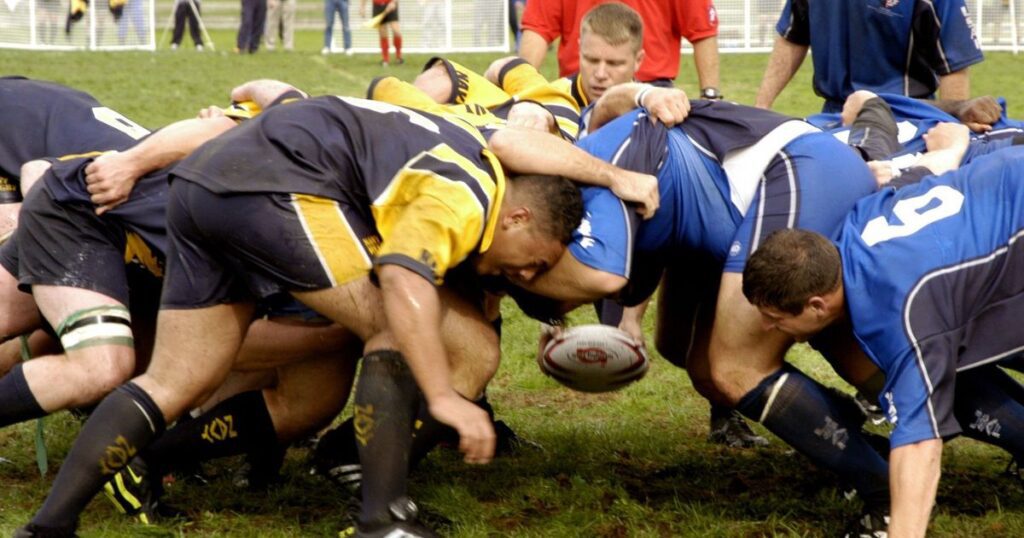Injuries are an unfortunate occurrence. When world-class athletes push their bodies to the absolute limit, the impacts and wear and tear can gradually accumulate. At the same time, safety measures and injury prevention techniques have improved over the years across most major sports.
In this blog post, I will discuss what professional sports have the Most Injuries. By looking at injury trends over recent seasons in sports like football, hockey, basketball, baseball, and soccer, we can get a data-based idea of which sports see athletes hurt most often. The causes behind frequent injuries can also help guide athletes, coaches, and leagues on where preventative measures could help.
These 9 Professional Sports Have Most Injuries
Football
Football tops the list of most dangerous major professional sports by a wide margin. Studies analyze injury rates across pre-season, regular season, and playoffs. Results show NFL athletes have over a 25% chance of sustaining an injury severe enough to miss games or practices per season.
The most common injuries include ligament tears in the knee (ACL) and shoulder, hamstring strains, and various muscle contusions. However, concussions and their potential long-term neurological effects have become the greatest health concern in football. Regulations aim to improve player safety, but the frequency of high-speed collisions with extreme physical contact inherently leaves football athletes vulnerable to harm.
Rugby
After football, competitive rugby ranks near the top for professional sports injury rates. Rugby shares similarities with football as large athletes crash into each other in physical contests for territory. However, rugby players need more protective gear than NFL athletes utilize. This raises injury susceptibility further.
Statistics suggest professional rugby players suffer confirmed concussions at nearly twice the rate compared to NFL athletes. Given the pace and demands of rugby matches, trauma to joints like shoulders and knees is also very common from players constantly falling upon one another in rucks (scrums). Fractures, dislocations, sprains, and strains all occur regularly due to the consistent blunt force trauma.

Ice Hockey
Ice Hockey follows football and rugby for overall professional sport injury incidence. Pushing their bodies to accelerate and cut at speeds up to 30mph on a slippery surface takes immense skill. However, with physical checking legal and encouraged, hockey athletes endure frequent body checks into the boards and dangerous collisions.
These impacts often lead to head injuries and concussions. Beyond head trauma, common injuries involve shoulders like the labrum or AC joint, knees (MCL/ACL strains and tears), and wrist fractures. Throughout ~100 NHL games, an estimated 70-80% of hockey players will sustain some form of musculoskeletal injury from the sport’s inherent risks. Goalies also commonly sustain bizarre arm, hand, and collarbone injuries from pucks struck at 90+ mph.
Boxing
Combat sports like boxing and mixed martial arts see athletes willfully injure each other via punches, kicks, and submission holds. Being struck forcefully thousands of times over a career as a fighter leaves boxers prone to facial fractures, hand/wrist issues, shoulder dislocations, and countless blows to the head. Given the fundamental nature of boxing, risks of developing various short and long-term neurological health conditions run high.
Fighters may sustain apparent brain trauma like subdural hematomas or more subtle ongoing conditions like diminished brain volume, processing, and memory over time. Estimates suggest the average professional boxer endures a moderate to severe sports injury approximately 2 to 3 times per calendar year.
MMA
As a hybrid mixture of wrestling, judo, jiu-jitsu, and kickboxing, it is no surprise that MMA is one of the most dangerous competitive sports. Throughout a multi-year career, an MMA fighter may absorb thousands of head strikes in competition alone during matches.
Beyond brain trauma risks, MMA also sees very high rates of facial cuts/lacerations, given the minimal gloves used. Hand fractures, shoulder dislocations, knee ligament tears (ACL/MCL/meniscus), and more are also quite prevalent. Given the diverse attacking and grappling involved, almost every part of an MMA fighter’s body remains susceptible to harm over time.

X Games/Action Sports
So-called “extreme sports” featured annually at the X Games provide an interesting look at how severe sports injuries may become. Events like snowboard halfpipe, skateboard vert ramp, and motocross involve athletes intentionally attempting dangerous tricks with a high degree of inherent fall risk. Crashes from 15+ feet above ramps/dirt onto solid surfaces leave zero room for error.
Thus, even with protection like helmets and pads, any slight miscalculation still often results in concussions, fractures, dislocations, and heavy bruising at a minimum when things go wrong. Medical groups estimate over 30 percent of televised crashes in these extreme competitions directly send athletes to urgent trauma care.
Basketball
The high-intensity pivoting, cutting, and elevation needed to excel at basketball still take major tolls on joints over time. Ankles, knees, and hips endure the most damage from the sport’s athletic necessities, like changing direction on a dime, elevated jump landings, and aggressive rebounding in crowds.
ACL knee ligament tears can be career-altering. And issues like Achilles tendon ruptures, though less common, can be even more devastating. Throughout an NBA season, starters play well over 1000 minutes on average. The strain of all that running/jumping leads to an average of 1-2 moderate injuries per player per full season.
Cycling
Professional cycling is synonymous with the Tour de France, where athletes traverse 2000+ miles over three grueling weeks. Spending 5-6 hours daily on a bike across vast distances frequently leads to overuse issues like wrist tendinitis or knee bursitis from repetitive motion.
Race crashes are also prevalent when cyclists strike the pavement at 35+ mph. Collarbone breaks, shoulder dislocations, road rash, and head injuries all occur. Studies suggest 60%+ of riders sustain some form of injury during grand tour races. Fear of crashing is omnipresent in the pro peloton, but athletes accept this occupational hazard chasing victory.

Auto Racing
Professional auto racing puts competitors in tremendous danger due to the extreme speeds, tightly packed cars, and the likelihood of high-speed crashes. The average IndyCar or NASCAR race sees over 30 percent of drivers experience some vehicle contact. Accidents and mechanical failures at 200+ mph inevitably lead to injuries.
The most common injuries tend to be orthopedic trauma from the intense impacts and g-forces. Broken ribs, collar bones, vertebrae damage, and traumatic head injuries are prevalent after major wrecks. Though safety measures like walls, belts, and neck braces provide crucial protection, drivers face risks like fire, smoke inhalation, and lung damage. Other progressive issues like deafness and neurological conditions come from prolonged exposure to noise, vibration, and crashes over long careers.
On average, professional race car drivers face injury rates exceeding 35 percent during each racing season. However, safety technology advancements introduced over the last 15 years have led to declining rates of life-threatening injuries like head/spine trauma. However, major crashes can still lead to career-ending or significant long-term health impacts in modern racing.
Conclusion
After exploring various contact sports’ inherent injury risks, some clear patterns emerge on which see the highest rates. Football tops the list due to the constant high-energy collisions and the need for physical domination. Sports like rugby, hockey, MMA, and boxing trail closely behind. Even in less direct contact sports like basketball, baseball, and cycling, overuse issues and mishaps remain concerning.
FAQs
Which Sport Sees the Most Concussions?
Recent injury analysis shows that rugby players suffer concussions at the highest rate among major sports, even exceeding the much-discussed rates in the NFL.
Do eSports Gamers get Repetitive Motion Injuries like other Pro Competitors?
Yes, professional gamers endure wrist, elbow and shoulder issues from excessive gaming. But rates pale compared to most mainstream physical sports with contact.
How do Injury Rates Between Male and Female Athletes Compare?
Research indicates female athletes actually show higher rates of ACL knee injuries versus male counterparts in the same sports, though the causes behind this trend remain unclear.
Can Rule Changes help Reduce Injuries in Contact Sports?
Yes, leagues often tweak guidelines around dangerous plays, equipment specifications, concussion protocols and more to try driving down injury trends incrementally over time.
Which Injuries Shorten Professional Athletes Careers on Average?
Injuries that impact conditioning and mobility especially knee, back and foot issues contribute to earlier than expected retirement across many sports.




